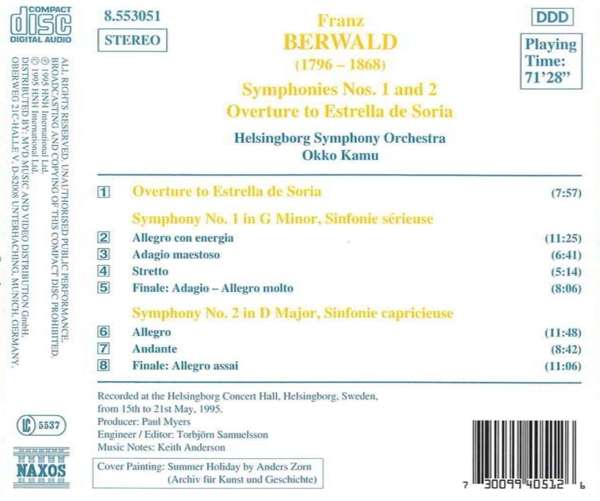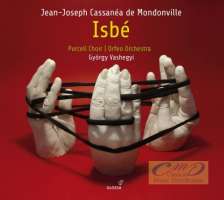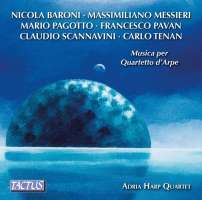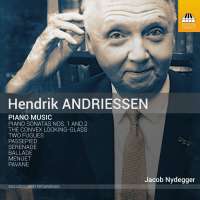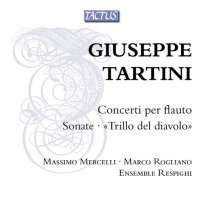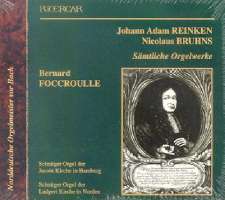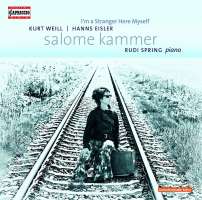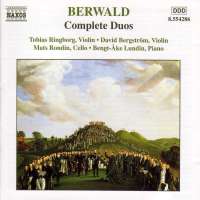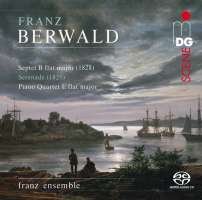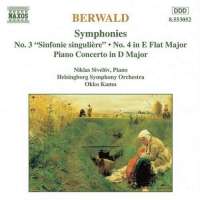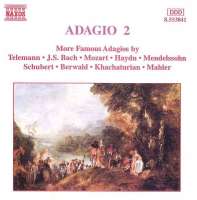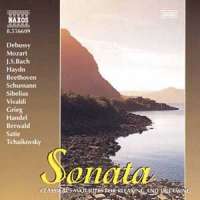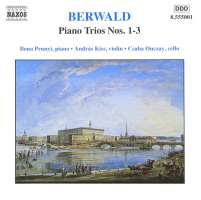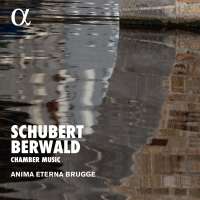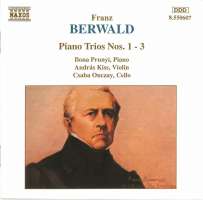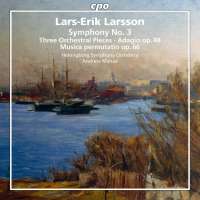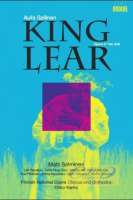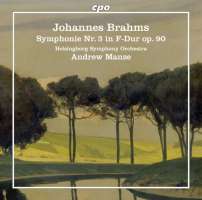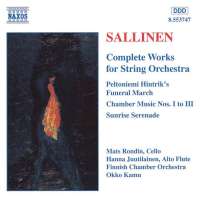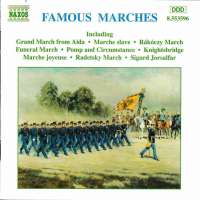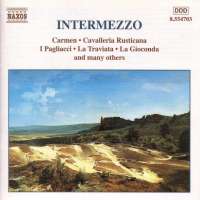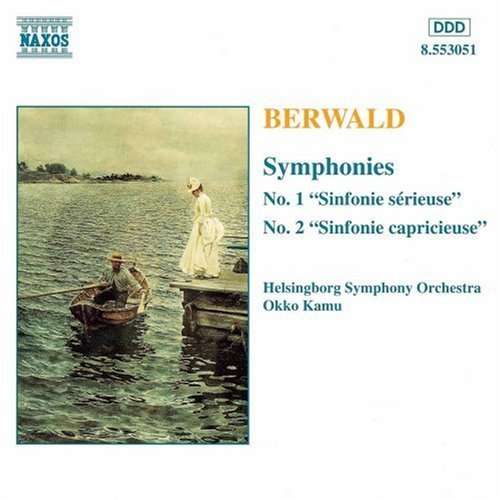
kompozytor
Berwald, Franz
tytuł
Berwald: Symphonies nos. 1 & 2
wykonawcy
Helsingborg Symphony Orchestra;
Kamu, Okko
Kamu, Okko
nr katalogowy
8.553051
opis
Berwald's Sinfonie serieuse was written in Vienna in 1842 and first performed at the Royal Opera House in Stockholm in a benefit for the composer on 2nd December 1843. The concert had only one rehearsal and it was suspected that Johan Fredrik Berwald acted out of jealousy in seeing to it that the performance was unprepared and unimpressive. Critics were well aware of the poor quality of the performance in music that seemed at the time difficult and capricious in its originality. The second movement was played at Berwald's funeral on 14th April 1868, but the whole symphony was not heard again in Sweden until 1871. The last movement had, it seems, been redrafted after the first performance and it is the revised movement that survives in a score apparently copied in 1844.
The Sinfonie capricieuse has given rise to some controversy. The original score of the symphony was lost but a D major symphony survives in short score, and it is this work that has been identified by some as the Sinfonie capricieuse, using a title that Berwald himself had contemplated and that was mentioned by his wife as early as 1842 as a composition of that year. The short score of the D major Symphony has a boxed-in title Sinfonie capricieuse at the centre of the head of the first page, and a more tentative boxed Sinfonie pathetique to the right. The questions that remain open concern the identification of the surviving symphony in short score with the Sinfonie capricieuse, although there seems no doubt that Berwald did orchestrate a symphony of that name.
If the Symphony in D major is the Sinfonie capricieuse, then it would seem he did not follow his usual practice of destroying the sketch in short score once the orchestration was completed. The manuscript bears the date Nykoping 18th June 1842 and the symphony was, therefore, written during the summer months that Berwald spent there with his wife, working at his compositions during the day-time and walking with her in the evenings. The orchestral realisation of the work was undertaken for the Berwald Stiftelsen in 1913 by Ernst Ellberg.
The Sinfonie capricieuse has given rise to some controversy. The original score of the symphony was lost but a D major symphony survives in short score, and it is this work that has been identified by some as the Sinfonie capricieuse, using a title that Berwald himself had contemplated and that was mentioned by his wife as early as 1842 as a composition of that year. The short score of the D major Symphony has a boxed-in title Sinfonie capricieuse at the centre of the head of the first page, and a more tentative boxed Sinfonie pathetique to the right. The questions that remain open concern the identification of the surviving symphony in short score with the Sinfonie capricieuse, although there seems no doubt that Berwald did orchestrate a symphony of that name.
If the Symphony in D major is the Sinfonie capricieuse, then it would seem he did not follow his usual practice of destroying the sketch in short score once the orchestration was completed. The manuscript bears the date Nykoping 18th June 1842 and the symphony was, therefore, written during the summer months that Berwald spent there with his wife, working at his compositions during the day-time and walking with her in the evenings. The orchestral realisation of the work was undertaken for the Berwald Stiftelsen in 1913 by Ernst Ellberg.
nośnik
CD
gatunek
Muzyka klasyczna
producent
Naxos
data wydania
27-02-1996
EAN / kod kreskowy
730099405126

(Produkt nie został jeszcze oceniony)
cena 58,00 zł
lubProdukt na zamówienie
Wysyłka ustalana indywidualnie.
Darmowa wysyłka dla zamówień powyżej 300 zł!
Darmowy kurier dla zamówień powyżej 500 zł!
sprawdź koszty wysyłki